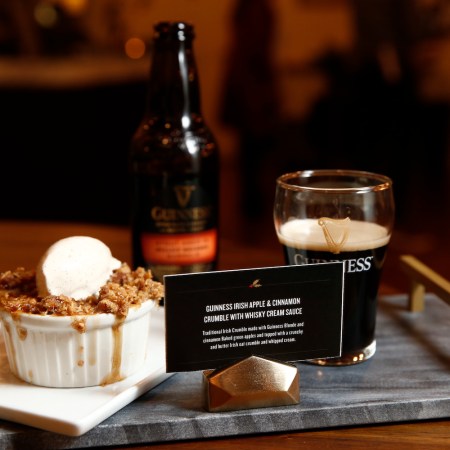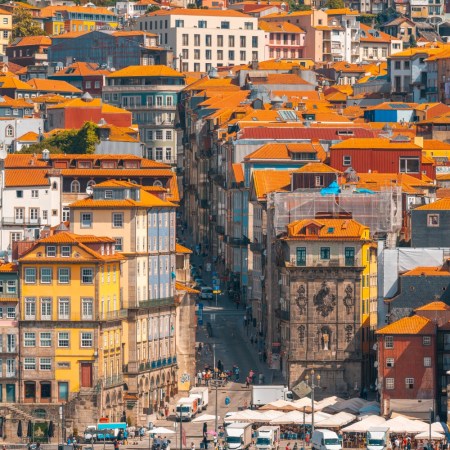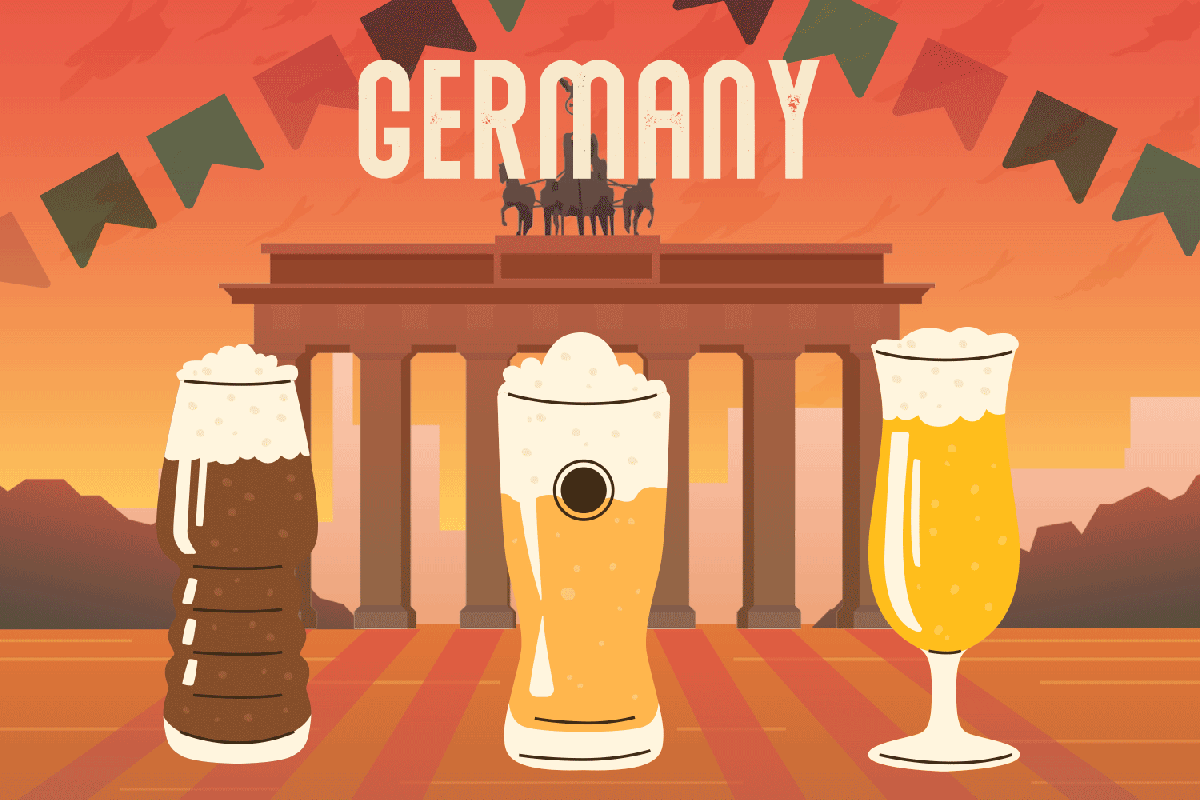
To celebrate the incredible drinking cultures of Europe, we dove deep into 10 different countries to get to know a little more about what’s in their glasses and how it got there in the first place. Click here to see them all.
It’s simply impossible to separate German drinking culture and the art of brewing beer. Actually, it’s all but impossible to separate German culture and beer, that’s how deeply connected it is to the fabric of the country. Beer — and its presence at the country’s most iconic national drinking event, Oktoberfest — have long dominated global awareness of Germany’s alcohol production, and with good reason.
“In no other country is beer as much a focus as in Germany, and that’s why it is the number one national drink,” says Christian Dahncke, the first brewmaster at Paulaner, a Munich-based brewery that’s been around since 1634. “With consumption of almost 90 liters per capita, beer is still one of the most popular drinks in Germany and is firmly linked to culture and traditions. Germany is also the country with the most types of beer and breweries in the world. There are currently more than 5,000 types of beers brewed by around 1,500 breweries.”
Yet, even with such an emphasis on beer, there’s plenty of other drinking traditions that have been built up in the country. There’s a massive German wine scene, and their traditional rieslings have become internationally acclaimed. In the southern part of the country, an emphasis on fruit brandies that draw from the bounty of the Black Forest is well-established, and during the last few decades, a new generation of local distillers have cropped up to produce gin and other spirits.
All of these industries, plus incredible bar scenes in cosmopolitan hubs like Berlin, Munich, Hamburg and Cologne, means that cocktail culture, wine and spirits of all kinds are alive and well in Germany — even if beer continues to be king. To explore all that and more, here’s a deeper look into how these libations define the German drinking identity.
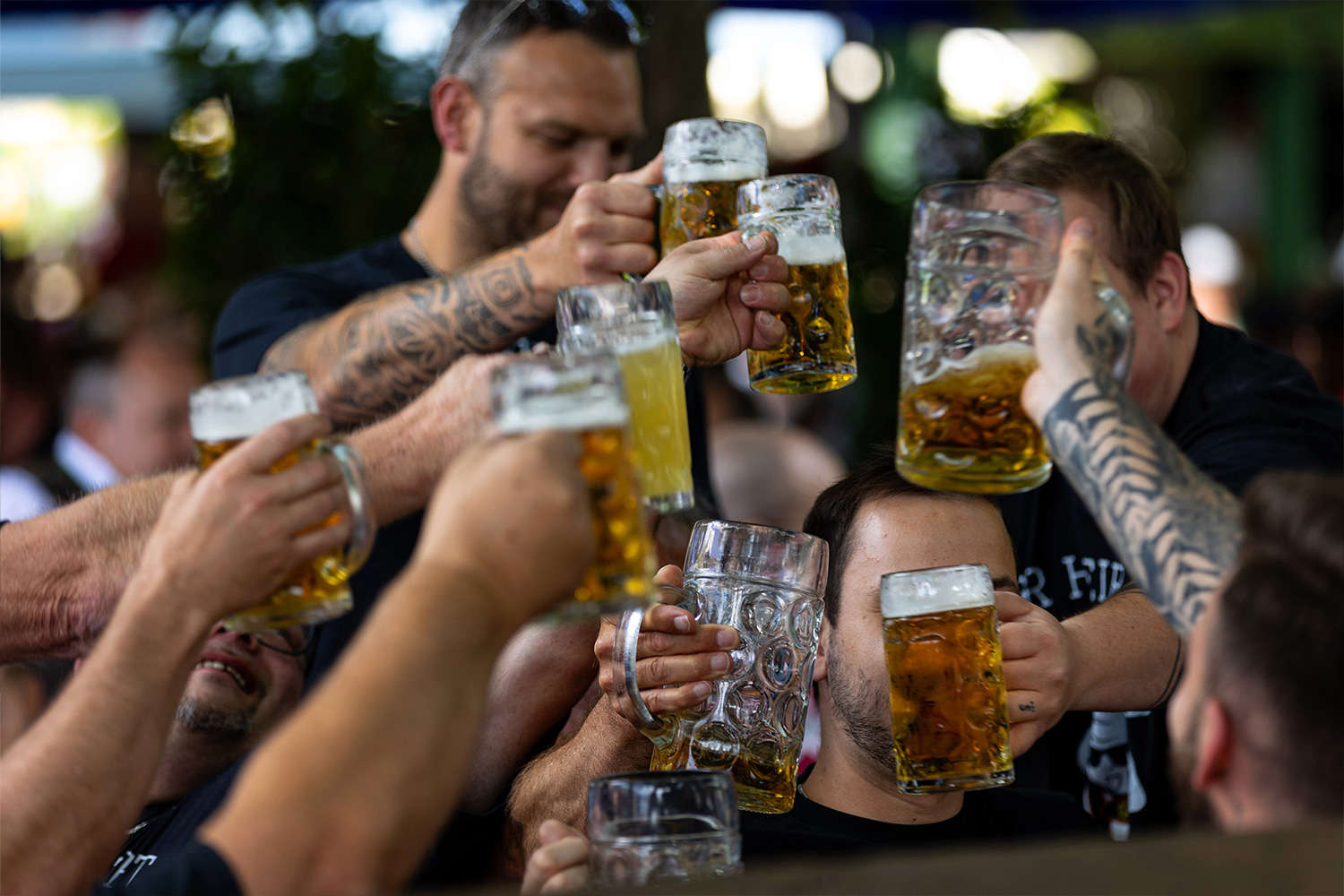

Beer
There’s no stronger representation of German culture than beer — it goes beyond drinking culture itself and has become part of what defines the country. That’s partially because of the long history it has here and partially because of how it’s developed across many different German regions to be part of the daily routine. The way some cultures rely on coffee to mark different points in the day or provide energy and motivation in the morning, Germans do that with beer.
“Depending on the region, drinking beer is an integral part of the daily routine in Germany,” Dahncke says. “People often drink a beer in the morning for their ‘second’ breakfast. Beer is also part of lunch and dinner in Germany. Another cultural example of the connection with beer is evident in various sayings such as ‘something is brewing when dark clouds are gathering on the horizon.’”
German beer makers use just four ingredients to produce the liquid gold that makes their country go round — water, malt, hops and yeast, nothing else. That’s thanks to an ancient food law called The Reinheitsgebot or The German Purity Law. “We Germans are very proud that we have been brewing our beer according to the German Purity Law since 1516, making it the oldest food law in the world,” Dahncke says. “The Purity Law guarantees that only water, malt, hops and yeast are used in production and has for more than 500 years.”

Wine
As with many European countries, German winemaking traces its roots all the way back to ancient Roman influence, but it developed its own signature style during the last several hundred years. Though it’s not quite as all-encompassing as beer, wine is a big part of German drinking heritage, particularly in places like the Mosel region, where sweet and dry riesling production is going strong.
“Germany isn’t just about beer,” laughs Ernst “Erni” Loosen, the winemaker behind Dr. Loosen, a weingut (wine producing property) with vineyard parcels all over Mosel. “Organized winemaking was introduced into the Mosel region by the Romans nearly 2,000 years ago, and there’s some evidence that the indigenous Celtic tribes were making wine before that.”
Though winemaking was scattered throughout Europe in ancient times, production was greatly expanded during the Middle Ages because of what Loosen calls “the encouragement of Holy Roman emperor Charlemagne and the fastidious viticulture of the monastic orders.” Because of the terroir and climate in Germany, white wine has become dominant, particularly Riesling, which thrives in well-draining limestone and shale soil and cooler climates that suit its slow ripening pace.
“The extensive history of winemaking in Germany culminated in the late 19th century when German wines were the most highly-prized (and most expensive) wines in the world,” Loosen says. “In recent years, I’ve undertaken several projects to revive the historical winemaking techniques, like natural, unhurried fermentations and extended maturation in fuder casks, so our wines develop the harmony and balance that can only be achieved through time and cannot be rushed.”
Even wine tourism is a part of Germany’s wine culture. Further south of Mosel is the Baden Wine Route, which is the third largest wine-growing region in the country. Dotted with charming villages like Oberkirch, both international and national guests can take a cellar tour at the local wine cooperative, visit small, farm-based winemakers — like Julius Renner, who is known for bringing guests on a “Vineyard Safari” in his Land Rover — and enjoy hikes, tastings and food pairings.

Fruit Brandies
One of the more unusual alcoholic drinks popular in Germany are native fruit brandies, or obstbrand. Not to be confused with sweeter schnapps (grain alcohol with fruit flavor added), obstrand is a strong, crystal clear spirit distilled from the fruit itself. Particularly around the Schwarzwald, or Black Forest, where fruit production is so prolific, these brandies are commonplace and beloved by locals.
“The craft of distillation has a long tradition here in the Black Forest,” says Anne-Katrin Hormann (nee Fies), the co-owner and proprietor of her third-generation, family-run distillery, Brennerei Franz Fies. “In 1726, the Bischoff of Straßburg (Bishop of Strasbourg) allowed the people of Oberkirch to distill their cherries. We have lots of cherries in this region because of the humid soil of the Rhein River, so it’s not possible for the farmers to sell all of their fruit on the fresh market.”
Historically, distilling has always been strictly controlled by the government, but for poor farmers with excess produce, the money from alcohol sales can make a significant difference in their bottom line. Because the Bishop of Strasbourg was one of the first entities to realize this and support the farmers in their production, he’s widely beloved throughout the Schwarzwald. “Because of the Bichoff’s decree, today we have nearly 1,000 small distilleries here in Oberkirch,” Hormann says. “This is unique and makes Oberkirch the main capital of distilleries.”
Black Forest Gin
There are still plenty of distilleries in Germany that aren’t completely focused on fruit brandy but produce their own distinctly German version of classic spirits. For instance, Boar Distillery is a family operation that’s been based in the Black Forest since 1844 and became well-known for including the extremely rare Black Forest truffle in their signature gin.
“The truffle triggers a harmonizing effect in the production process and removes bitter substances and spiciness from the gin, making it extremely mild,” says Boar Distillery CEO Hannes Schmidt. “A total of 19 botanicals are used, and after distillation, the gin is left to rest for another three months before it is reduced to 43% drinking strength with mineral-rich Black Forest mountain spring water and bottled.”
Again, it’s a craft approach that separates distilleries like Boar from their competitors. Instead of using an industrial spirit (made in bulk by someone else) and simply adding their own botanicals, Boar goes through the painstaking process of producing their own gin first. “In comparison to other gin distillers, we also produce the base alcohol for further processing into gin itself,” Schmidt says. “It does not use industrial spirit but rather a very high-quality base alcohol.”
In some ways, their stringent approach is comparable to the simplicity of the purity law followed for German beer brewing. And the accolades the brand has received for their process speak for themselves — Boar Gin has won more than 110 awards worldwide and has been named “Gin Of The Year” several times, including at the International Spirits Competition ISW.
Another favorite is Monkey 47, a premium gin that’s perfect for just about anything, especially Martinis. Every year, they release their Distiller’s Cut bottling that includes a special botanical (capers were the star in the latest edition).
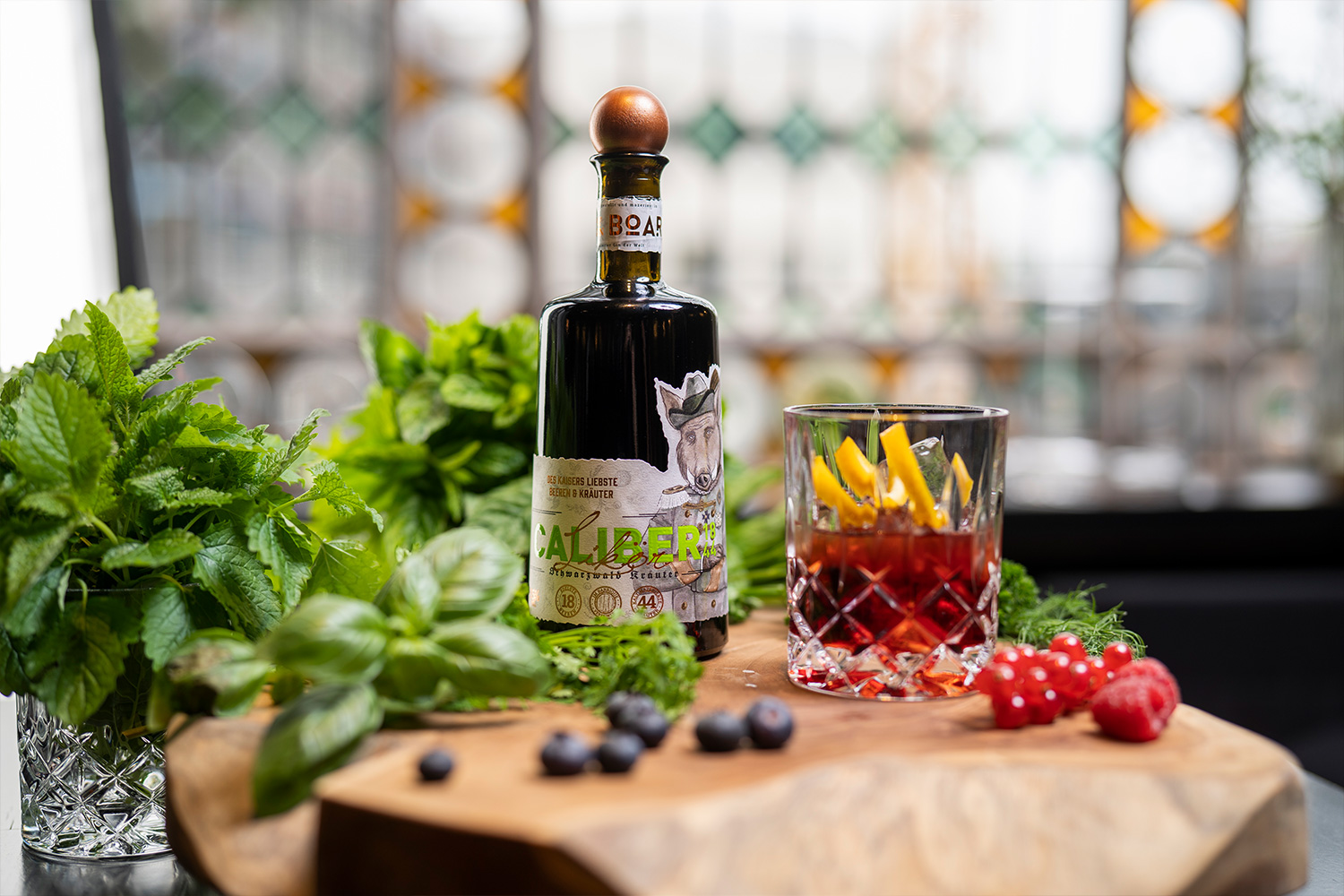
Plus, the Homemade Thing
While it’s now technically illegal for private individuals to distill spirits — and even for formal distilleries, the alcohol tax laws are incredibly strict — there’s no denying the impact homemade distilling has had on obstrand’s current popularity. Of course, the most important thing when it comes to making a great obstrand is your choice of fruit.
“To produce the best qualities of brandies, the first step is buying fruits like cherries and plums from the farmers,” Hormann says. “It’s also important to check the sugar content of the fruit because the more sugar, the more alcohol you will get.”
From there, the fruit is turned into a mash and then heated. When it gets hot, the gaseous alcohol goes up out of the mash, and when the gas is collected and cools back down, fruit is added to the pure alcohol and macerated to give it aroma and taste. Though there are still distilleries all over the Black Forest, Fies is one of the oldest and most iconic.
“My grandparents Franz and Elisabeth Fies founded our distillery in Oberkirch-Ringelbach in 1948,” Hormann says. “They produced the typical brandies of the fruits that grow here around Oberkirch. The typical square bottle with the Black Forest couple is the trademark of our family distillery, and even today it’s our most important product series.”
Beer is also in the mix for homemade alcohol. As in many other countries right now, the home brewing scene is alive and well in Germany. Private individuals are legally allowed to brew up to 200 liters for private consumption without needing to pay taxes. In a country where there’s never enough beer to be had, the ability to have your own private stash at home is embraced.


As impossible as it is to discuss Germany without bringing up beer, it’s just as inevitable that any conversation about German beer naturally leads to the subject of Oktoberfest. But what the rest of the world might not realize is Germans have a beer for every single season, which means a plethora of smaller festivals are happening all year long.
“Because every season has its own beer, there are many events and beer festivals all year round relating to beer,” Dahncke says. “It starts with the strong beer season, or Starkbierzeit, when double bock beers like Paulaner’s Salvator are served. The strong beer festivals usually take place in March at the brewery’s tap rooms or in restaurants, and they’re very popular. Strong beer has an original density of 18%, and the alcohol content is around 8%, so it’s a beer you have to be very careful with.”
A few months later, another slew of events kicks off in May for the Maibock festivals. According to Dahncke, these often take place in beer gardens in Bavaria but can happen all over Germany. “The Maibock is a little weaker than the double bock beers but still stronger than the lager beers in Germany,” Dahncke says. “The Maibock beers traditionally mark the start of the spring and summer seasons in the restaurants and open the beer garden season.”
In the end though, there’s nothing that has more impact than the multi-week Oktoberfest celebration. “The most well-known beer festival is certainly Oktoberfest in Munich, which always starts at the end of September and ends on the first weekend in October after 16 days,” Dahncke says. “But as you can see, we can enjoy our beer specialties in Germany all year round.”
Because winemaking is also a very seasonal activity, celebrations around the harvest are another way for locals — especially in the northern regions of Germany — to let loose and blow off some steam. “We also drink a lot of beer up here in the more northern regions of Germany, but here we have a deep connection to wine that doesn’t really exist in Bavaria,” Loosen says. “Of course, we also enjoy our harvest-time celebrations, and nearly every village in the Mosel hosts a Strassenfest (street festival) in September or October, so there’s more to Germany than Oktoberfest!”
Traditional wine festivals are standard practice in the north, and newer, more regional-focused ones are also cropping up, as winemakers like Loosen have been reinvigorating historic wine traditions. “Our hometown of Bernkastel hosts one of the largest wine festivals, the Mittlemosel Weinfest, usually during the first weekend of September,” he says. “There’s also a newer event called Mythos Mosel, which explores a specific stretch of the river each year in late May or early June.”


Some of the flavors in beer have everything to do with how certain salty, fatty foods became so synonymous with German culture. It’s no coincidence that the omnipresent salted fluffy pretzel, savory schnitzel and, of course, sausage all happen to pair beautifully with a nice cold pint. But beer can be just as diverse as wine or spirits, so there are other foods that Dahncke suggests pairing with some of the brews, depending on your tastes.
“Our wheat beer smells slightly of banana and has a nice balance of sweetness and bitterness, so it goes well with a great snack board, fish or even a salad,” Dahncke says. “Our Oktoberfest beer goes perfectly with Oktoberfest classics like chicken, and our Salvator pairs particularly well with stews, game or meat dishes, and sweet desserts.”
If you find yourself in the Black Forest region and are planning to try obstrand, cherry is the most traditional flavor and naturally has a few foods to pair with it the are made from the same fruit. “Typical products with our cherry brandy are the most famous Black Forest cake and a cherry brandy ‘salami’ that’s a product of our local butcher,” Hormann says. “As for the brandy itself, it’s not just a classic digestif but can also be used in drinks that are popular throughout Germany right now, like a Williams Sour or a Himbeer Tonic.
For German wines, there are a couple of perfect pairings Loosen recommends, like cured ham, alpine cheeses and even smoked trout with crackers. “A bright and zippy Riesling Kabinett pairs well with anything smoky or salty that isn’t too heavy,” he says. “Smoked trout on crackers with a bit of remoulade is a fantastic match. Salty roasted hazelnuts, alpine cheeses, white rind cheeses, thinly-sliced schinken (cured ham) and salty potato chips are all tasty treats with riesling. Fuller-bodied dry rieslings work well with all of those snacks but are also exceptional partners for the main course at dinner.”


One of the most famous beer halls in the world, Hofbräuhaus in Munich, should be at the top of your list if you ever visit Germany. “When you think of beer in Germany, you immediately think of the most famous pub in the world, the Hofbräuhaus in Munich,” Dancke says. “Beer has been served here for more than 500 years. But the kölsch culture or altbier culture in Cologne and Düsseldorf, for example, also have lively beer scenes with many traditional bars. For me as a master brewer, however, the Munich Oktoberfest is and remains the number one place where a real beer fan has to go”
Though historic drinking will always be part of the fabric of German drinking culture, their contemporary offerings have been racking up accolades recently. A handful of standout cocktail bars in Berlin have appeared on the World’s 50 Best Discovery Lists, including Wax On Bar, where high-tech processes like rotary evaporators and centrifuges are part of the drink-making process. Truffle Pig is a speakeasy that’s accessible only by following the tracks of a pig inside the local pub, Kauz & Kiebitz, and ringing the doorbell. Once inside, a balanced cocktail menu that mixes unexpected culinary ingredients into each drink rivals any sophisticated Brooklyn or London hotspot. That, plus the sensual, sophisticated decor of dark wood and velvet, complete the speakeasy experience.
When drinking in Hamburg, a must-visit is the Bar Le Lion, which is the birthplace of the Gin Basil Smash, a cocktail that has taken Germany by storm of late. Originally known as the Gin Pesto — named because of the smashed basil but renamed so it wasn’t confused with more savory flavors — it’s an herbaceous, slightly sweet cocktail of gin, lemon, sugar syrup and basil.

Plenty of the feedback on a good night of drinking in Germany has to do with balance. Or maybe that’s a result of plenty of nights spent not achieving that goal.
1. Be careful what you drink: “There’s nothing worse than a poorly-made drink or bad liquor,” Schmidt laughs. Because of the emphasis on purity, fresh ingredients and simple recipes, Germans recognize more than many other countries the importance of knowing exactly what goes into the quality off the alcohol they’re drinking.
2. Wine and all other alcohol is primarily social, so always share with friends: This advice, from winemaker Ernst Loosen, rings true across the board for German drinking culture. There’s a reason festivals are the most prevalent way for people here to enjoy the experience of alcohol, as big events where everyone is invited are the best way to get the most people together to celebrate.
3. Never drink alone or as much as you want: As someone who lives and breathes alcohol and works every day at a distillery, Schmidt advises that drinking just for the sake of getting drunk or just because alcohol is there never goes well. His counsel is to save alcohol for special occasions and make it a meaningful experience.
4. Don’t drink too much and take a break with one of the many non-alcoholic options available these days: Loosen notes that balance is always going to be key, and prevalence of new N/A options makes sticking to your limits easier than ever. For those looking for locally-made German N/A options, the winemaker recently introduced his own Dr. Lo Riesling as one potential option for anyone who is sober or taking a night off but doesn’t want to sacrifice taste.
5. Always save the last drink for the next day: When you have the urge for a final drink, put a pin in it and save that energy for your first drink the next day. In Germany there’s always going to be a first drink of the next day to look forward to.

The New Popaloma
German cocktail culture has been focused on reinventing the classics lately, so along with the Gin Basil Smash, which you can read about above, Schmidt offers up a brand new recipe that features Boar Gin in a twist on a classic.
“Every year in September, there’s a big music festival called The New Pop Festival in Baden-Baden, and this year we served drinks around the clock,” Schmidt says. “The festival’s organizer is Germany’s largest radio station, SWR3, and the whole city becomes a festival site for several days. We created a drink specifically for the event called The New ‘Popaloma’ that’s a take on a classic Paloma.”
1.5 oz. Boar Gin
.5 oz. lemon juice
.25 oz. elderflower syrup
Pink grapefruit tonic water, to taste
Salted grapefruit slice, for garnish
Dried flowers, for garnish
Pour the gin, elderflower syrup and lemon juice into a glass filled with ice and top up with tonic. Garnish with a salted grapefruit slice and dried flowers. Cheers!
The Hindenburg Kirschwasser
The backstory for this historical drink isn’t as lighthearted as a music festival but is attributed to a supply and demand problem aboard a Zeppelin journey. “The Hindenburg Kirschwasser became famous in 1936 during the crossing of the Zeppelin Hindenburg from Germany to New York,” Schmidt says. “The illustrious and drinking-loving company on board celebrated wild parties and enjoyed pure luxury. But the party guests on board the ‘Hindenburg’ had a problem— the bartender ran out of gin.” A passenger improvised by using kirschwasser in place of gin, infamously balancing the unsweetened cherry brandy with grenadine and vermouth. “The Hindenburg Cocktail is a rather dry drink that is nevertheless balanced and tastes wonderfully of cherries on the finish,” Schmidt adds.
1.5 oz. organic kirschwasser
.5 oz. dry vermouth
1 dash grenadine
Lemon peel, for garnish
Stir the kirschwasser together with the dry vermouth and the grenadine in a pre-chilled cocktail glass. Squeeze the lemon peel over the drink and drop it into the glass.
Every Thursday, our resident experts see to it that you’re up to date on the latest from the world of drinks. Trend reports, bottle reviews, cocktail recipes and more. Sign up for THE SPILL now.
